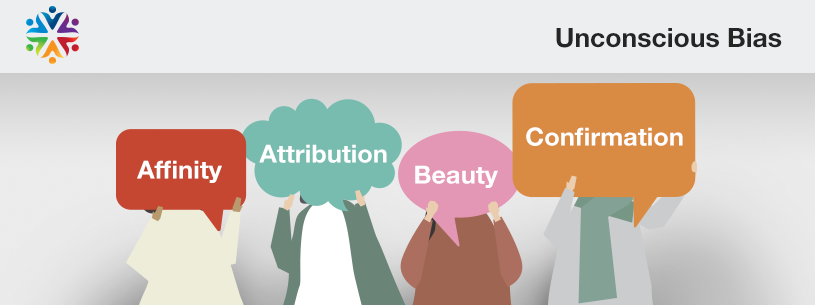Unconscious biases are social stereotypes about certain groups of people that individuals form outside of their own conscious awareness. Often when we think about a bias, we think of a deliberate and malicious action against someone else. However, sometimes biases occur without any conscious realization at all. This can lead to problems ranging from microaggressions in the workplace to unintended harassment or racism. Here, we’ll explore types of unconscious bias in the workplace.
Unconscious Bias Training
Microaggressions are an essential component of sensitivity training in the workplace. In this article, you’ll discover some of the different types of unconscious bias examples, which will help you begin to recognize and prevent them in your workplace.
What Are the Different Types of Unconscious Bias?
Affinity Bias
An affinity bias refers to our tendency to gravitate toward people similar to ourselves. If you’ve ever wondered why similar people tend to become friends, it’s because of this as we tend to like people who remind us of ourselves or someone we know and like.
Example: If you’re working with an employee who went to the same college or grew up in the same town, you may be more likely to smile or offer encouraging words, compared with an employee with whom you don’t share similarities.
Attribution Bias
Attribution bias contributes to how we assess others and their achievements. When we think of our achievements, we judge ourselves based on our merit and personality. Anything we’ve been awarded, we’ve earned because of our own hard work; anytime we’ve failed, we’ve been adversely impacted by external factors. When we assess others, we often think the opposite. We believe their successes are due to luck, and their failures are due to poor personal error.
Example: When someone cuts a driver off, the individual who was cut off is more likely to attribute their actions to the other driver’s inherent personality traits (.e.g. recklessness, rudeness, incompetence) rather than the situational circumstances (e.g. the driver was late to work).
Beauty Bias
While few people admit to having a beauty bias, many judge others based on their physical appearance.
Example: Seeing a coworker as unprofessional because of how they dress
Confirmation Bias
Confirmation bias involves searching for evidence that back up our existing opinions, instead of objectively looking at all information. Often this causes people to overlook information and to focus on factors that fit only their view and reject evidence that contradicts what they already believe.
Example: A candidate arrives 10 minutes late due to a circumstance outside of their control. Unaware of this, you automatically assume the candidate arrived because they are irresponsible and disorganized. As a result, when interviewing them you focus on information on his or her resume that backs up your preconceived notion.
Conformity Bias
Conformity bias is related to peer pressure and occurs when you allow your views to be swayed by others because you’re seeking acceptance from a group.
Example: Conformity bias often occurs in recruitment. If most people feel one way about a candidate, but you feel differently, you may feel pressured to align with the group’s opinions and views.
How many of these different types of unconscious bias examples have you noticed in your workplace? It’s no surprise that no one is immune to bias. Because of this, we all need to find ways to overcome these unconscious biases at work.
See part 2 of this article, with 5 more Examples of Unconscious Bias in the Workplace. And help your workplace be more inclusive, with managing unconscious bias training.
Types of Unconscious Bias FAQs
How many types of unconscious biases exist?
There are 16 different types of unconscious biases that affect those hiring for a job and in a workplace. These biases encompass a wide range of social, cognitive, and perceptual biases that affect how we perceive and interact with others.
What triggers unconscious bias?
Unconscious bias can affect anyone and is triggered by quick judgments of others. This may be influenced by their background, their appearance, personal experiences, or other stereotypes. It’s important to understand that these biases can arise from our subconscious, and they are often rooted in societal norms and cultural conditioning.
How do you resolve unconscious bias?
To overcome this unconscious bias in the workplace, first people must be aware of its existence and commit themselves to counteract this bias. This can be achieved through unconscious bias training programs that raise awareness and provide tools to mitigate bias. Additionally, fostering a culture of inclusion and diversity and encouraging open dialogue are crucial steps toward resolving unconscious bias.




